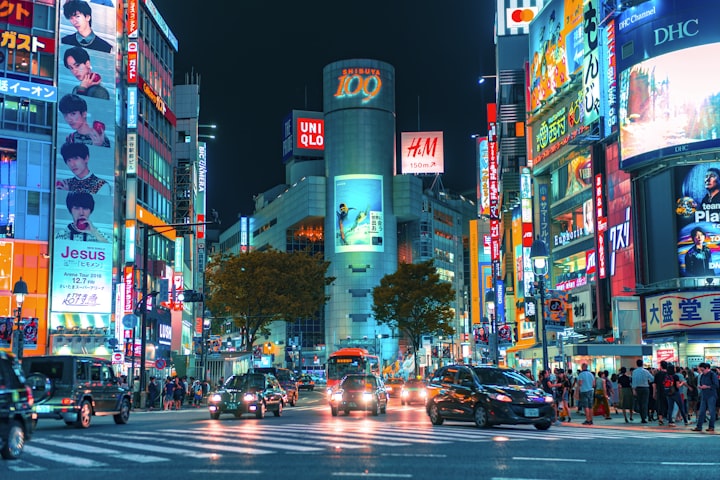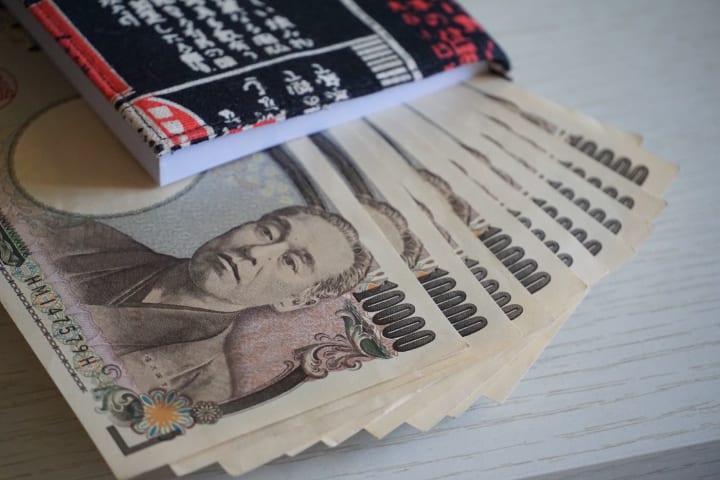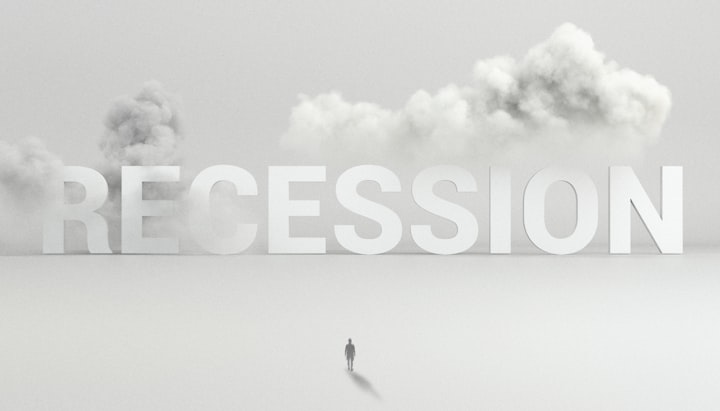How Japan Become The Third Largest Economy In The World
Japanese Economic Miracle From The 1950s to 1990s

On 15 August 1945, Japan was defeated by the allied forces. At that time, nobody had thought this defeated nation could become the third-largest economy in the world.
Never in history has a nation’s economy recovered so quickly from the war and become one of the largest economies in the world.
The Japanese economic recovery period is also known as the Japanese economic miracle because the growth of Japan’s economy has been exceptional.
Japan’s economy suffered the most from the second world war.
At the end of the second world war, Japan’s economy was significantly smaller than in the prewar period.
Let’s first understand what economic challenges Japan faced in the post-war period. So we can better understand how it overcame them and became the third-largest economy in the world.
Japan’s Economic Challenges After the Second World War
Japan had lost between 1.8 to 2.8 million people in World War 2. Production level in the war period was 1\10 of what it was in the prewar period.
Japan faced many economic challenges that crippled its economy. Let’s learn what economic challenges Japan faced in the post-war period.
High Unemployment

13.1 million people who served in the military came home and suddenly found themselves with no job. Millions of immigrants were also coming to japan from its occupied territories, which further contributed to the high unemployment rate.
After the war, most military servants and civilians were out of jobs. Unemployment in post-war Japan was sky-high.
Another reason for high unemployment was that japan’s land and industrial buildings were destroyed during the war.
So most people who worked in those industrial factories and buildings suddenly find themselves out of a job because the factories where they worked were destroyed by bombing.
Food crises

From 1944 on, even in the countryside, the athletic grounds of local schools were converted into sweet potato fields. And we ate every part of the sweet potato plant, from the leaf to the tip of the root…For protein, we ate beetles, beetle larvae, and other insects that we found at the roots of the plants we picked, which we roasted or mashed. Even in the countryside, food was scarce
- The Untold History of Ramen
Korea and Taiwan were Japan’s former rice-producing colonies.
After the war, When japan’s colonies were given independence, It had to depend entirely on their yields.
Poor weather led to a bad harvest in 1944 and 1945. Neither Japan nor US authorities properly regulate the production and food allocation nationwide.
A general decrease in global food production in 1945 and 1946 further added to this problem.
During the occupation, the communist party took advantage of the hunger crisis by blaming the famines on US authorities in japan. To bring down this propaganda and prevent the formation of communist japan. The US sent grains and troops to prevent pro-communist protests.
In 1947, US authorities established a school lunch program in Japan to give nutrition to children in the cities affected by the food crisis.
American charities and religious organizations develop Licensed Agencies for Relief in Asia to provide food, clothing, and other aid.
US aid to Japan amounted to 1.65 billion dollars from 1946 to 1950.
High Inflation

After the war ended, a large amount of currency had flown into the economy, In the form of provisional military expenses and payment for military goods.
To solve the problem of high unemployment and food crises. The Japanese government printed money to pay for subsidies while at the same time imposing price control. It was certainly not an effective economic policy.
Price controls were ineffective, and the printing of currency by the Japanese government led to triple-digit inflation in Japan from 1946 to 1949.
It was the highest inflation that Japan had ever experienced, before or since.

Government Policy

To solve economic challenges and increase industrial production. Japan’s government introduced policies that made this nation the third-largest economy in the world.
Many countries study those economic policies and try to implement them into their country’s economies to achieve the same success.
So what policies made Japan one of the richest countries in the world?
New Industrial Policy
It emerged from the ministry of international trade and industry ( MITI) in 1959.
MITI sent Japanese industrial designers to study abroad to learn new techniques and skills to upgrade the quality of Japanese goods. Which at the time were considered cheap copies of western products.
MITI had turned the Japanese economy from creating cheap products to producing high technology and high-quality products for domestic and foreign consumers.
It provides loans at very low-interest rates to companies in high-growth industries and tax cuts, so companies fuel their growth. It accelerates the overall Japanese economy.
It either offered a direct loan to companies or guaranteed a loan from a private bank to the companies.
MITI also offered government land at a low cost. So companies produce their product on government land at a low fixed cost which further helps them compete in global markets.
The goal was to promote industrial development by co-operating with private enterprises and providing them patents, government contracts, and tax cuts to increase Japan’s industrial production.
As a result, Japan’s auto production surged nearly 1,000% from 1964 to 1984, Capturing a quarter of the world market.
According to some scholars, no other governmental regulation or organization had more economic impact than MITI.
This industrial policy proved successful. Japan quickly turned from producing cheap products at low cost to making high technology products that fuel the growth of the Japanese economy.
Income Doubling Plan
The income doubling plan was a long-term economic development plan introduced by Japanese prime minister Hayato Ikeda in the fall of 1960.
The plan called for doubling the size of the Japanese economy in ten years through tax breaks, targeted investments, an expanded social safety net, and incentives to increase export and industrial development.
To double the size of the Japanese economy in ten years. The plan called for an average of 7.2% annual growth.
Surprisingly, Japan’s annual growth rate averaged more than 10 percent throughout the plan, and its economy doubled in less than seven years.
The income doubling plan far exceeded its goal. It proved a successful economic policy that helped the Japanese economy to become one of the biggest economies.
Various aspects of the income doubling plan are studied by other countries hoping to copy the same export-led rapid economic growth.
The Land Reform

In October 1946, under Japan’s land reform, landlords who owned more than the permitted amount had to sell the excess land to the government at a fixed price.
The government then sold the land at the lower level to the tenant who had been farming the land.
1947 to 1949, Approximately 38% of cultivated land was purchased under the reform program and re-sold at low prices to the farmers who worked on that land.
By 1950, three million peasants had their land. It dismantled the power that landlords had long dominated.
Land reform helps the poor farmers to improve their condition by farming on their lands, Which further improve the Japanese economy.
America’s Role in the Japanese Economic Miracle

After the war, America’s goal was to turn Japan into a demilitarized and democratized nation. So the 1947 constitution of Japan required that Japan would give up the right to its military force and rely on the US for protection.
So the money which would have gone to the military was going into producing goods and services. which helps the Japanese economy to recover.
Cheap Yen

In 1949, one of the factors of economic growth in Japan’s economy was the cheap yen in the early years of economic recovery.
The US government fixed exchange rates at 360 yen per dollar as part of the Bretton woods agreement.
So the Americans find it cheap to export goods and services from Japan, which also boost Japan’s export to the United States, Which becomes a big market for Japanese companies.
The cheap yen helps Japanese companies to compete in the global market and provide quality products at low prices.
It helped the Japanese companies steal the market share from many US companies in the United States.
US companies couldn’t provide quality products at such a low price that Japanese companies were providing.
In 1956, Japan’s real national income was 53 percent higher than the 1934–36 average and 64 percent higher than 1950.
Breaking Zaibatsu
Zaibatsu is a term used to describe family-owned business conglomerates that owned significant capital in the Japanese economy.
The structure of Zaibatsu was at the top is the holding company and was owned by a few wealthy families.
The holding company consists of hundreds of companies and a bank. So they provide loans from the bank they own to the company they own at a very low-interest rate which fuels their business empire.
By the start of World War II, the Big Four zaibatsu (Mitsubishi, Sumitomo, Yasuda, and Mitsui) alone had direct control over more than 30% of Japan’s mining, chemical, and metals industries and almost 50% control of the machinery and equipment market, a significant part of the foreign commercial merchant fleet and 70% of the commercial stock exchange.
But after the war, the American occupation administration broke up the zaibatsu and seized their assets.
US authorities tried to break up companies that were formerly owned by a single holding company.
Although, The complete dissolution of the zaibatsu was never achieved by allied forces due to the industrialization of Japan.
The keiretsu succeeded Zaibatsu, a set of companies interlocking business relations and shareholdings.
The members’ companies own small portions of the shares in each other’s companies, centered on a core bank; this system helps insulate each company from stock market fluctuations and takeover attempts, thus enabling long-term planning in projects. It is a key element of the manufacturing industry in Japan — Wikipedia
During the cold war, America started focusing more on building Japan’s economy as a bulwark against the communist states rather than punishing the Japanese forces. That was a big help to the Japanese economy.
When the world’s largest economy wants your economy to recover, that helps a lot.
The dodge plan of 1949

The dodge plan was a financial and monetary contraction policy introduced by the American economist joseph dodge for japan to get the recovery and stamp out inflation after the second world war.
The dodge line was a part of a bigger goal to democratize and present japan as an example of a capitalist country to other Asian communist states during the cold war.
To achieve the goal of strengthening Japan economically and stamping out inflation. The American occupation forces appointed Joseph Dodge as an economic policy consultant.
In Feb 1949, he arrived in Japan to look at the situation, and on March 7 he announced his plan.
The dodge plan of 1949 recommends the following:
- Balancing the national budget to reduce inflation
- More efficient tax collection
- Dissolving the Reconstruction Finance Bank because of its uneconomical loans
- Decreasing the scope of government intervention
- Fixing the exchange rate to 360 yen to one US dollar to keep the Japanese export rising
Although, Dodge’s plan had succeeded in its goal to make japan economically independent and control inflation in the long term.
But in the short term, it caused significant hardships for Japanese workers, leading to mass layoffs as the economy went into a contractionary period.
This contractionary economic period is also known as the dodge squeeze. The Japanese economy was plunging into a recession.
But in 1950, The Korean war began, which helped the Japanese economy to recover.
Korean war

When the Korean war began, US military forces realized that producing products and services in Japan and shipping them to Korea would be cost-effective.
As a result of the Korean War, Japan had become a supplier of goods needed for war. The Japanese economy had a massive increase in its production.
The extra income came to Japan from the US military, and civilians were used to buying raw materials to make more products and services.
During the Korean war, payments from the US government provided growth to the japan economy, amounting to 27 percent of japan’s total exports.
From 1941 to 1946, The national income of Japan fell by 50 percent. But from 1946 to 1957, it rose by 170 percent.
Well Educated Workers

One of the factors that made Japan a global economic power was its well-educated workforce.
A well-educated workforce played a big part in making Japan one of the biggest economies.
In 1868, The Meiji restoration educational reform promoted universal education, opened more public schools to educate more Japanese, and hired foreign teachers to educate a wide range of subjects.
At that time, This education reform helped the Japanese to become one of the most highly educated workforces in the entire Asian continent.
Despite being defeated in the second world war, Japan’s well-educated workforce play a critical role in its fast economic growth.
The Japanese Education system was further getting better after the second war, Which help a lot to fuel economic growth.
Emphasis on Quality
In Japan, Management to salary ratio was small at that time. Workers felt a connection with the company management.
So if a Japanese company’s management says to the workers that they are part of a family, Workers sense a connection with the company.
So Japanese workers knew their enemy was not management, but their competition, which also motivate them to work hard on creating high-quality products.
By 1953, production in Japan had reached the level of 1937. In the 1950s, Japanese products were cheap and of low quality. But in the 1970s, Japanese products represented high-quality brand products.
A well-educated and motivated workforce. The emphasis on quality with US support and cheap currency explains the Japanese double-digit economic growth.
Working Harder

If there is one thing that the Japanese are famous for is working harder than almost any other nation. Although, Working long hours doesn’t necessarily mean productive work.
But Japanese working long hours in the 1950s, 60s, and 70s helped fuel the growth of the Japanese economy.
Working harder generally means more people will put in more hours to make goods and services, which could fuel economic growth.
Japanese culture prefers the interest of a group as a whole such as a company as superior to an individual. Most people feel themselves part of the company or society which leads them to work harder for creating a quality product.
It is one of the reasons why the Japanese work harder than other western nations that give more emphasis on individual liberty.
High Savings Rate

Japan’s economy has seen enormous growth, which would never occur without the high savings rate.
Its people prefer to save more rather than consume today. Japan’s economy had a higher savings rate in the 1950s, 60s, and 70s than other countries like the United States or France.
These higher savings were then invested in productive capital to create more goods and services, Which can increase economic growth. Savings play a crucial role in a country’s economic growth.
When people have more savings, they can invest in assets that can be used to create more goods and sell them, Which can improve the economic growth of a country.
In most Asian countries, people tend to save more than anywhere else.
High savings seem to be a cultural preference that has allowed Japan to become one of the biggest economies in the world.
Conclusion
Japan’s economy was the world’s second-largest (behind the US) from 1968 until 2010. then it was overtaken by China.
The 1950s, 60s, and 70s were the golden years of Japan, In which Japan became the second largest economy at the time within just three decades.
In 1945, the rural population of Japan stood at 50 percent. But by 1970, it had fallen to less than 20 percent.
From 1955 to 1975, the Japanese economy grew more than 435% percent, adjusted for inflation.
Japan is one of the few countries that had achieved a rapid economic miracle in a few decades.
About the Creator
Arsalan Haroon
Writer┃SEO Expert┃Investor
Reader insights
Outstanding
Excellent work. Looking forward to reading more!
Top insights
Compelling and original writing
Creative use of language & vocab
Easy to read and follow
Well-structured & engaging content
Eye opening
Niche topic & fresh perspectives
Heartfelt and relatable
The story invoked strong personal emotions
On-point and relevant
Writing reflected the title & theme







Comments (8)
Well deserved top story. Off topic a bit, but still relevant to Japan; it was a shame to observe what happened to Shinzo Abe, who was a real asset to Japan.
https://aff.stakecut.com/591625/370678
What to know before you dive into entrepreneurship. Check it out guys!! https://vocal.media/trader/the-truth-about-entrepreneurship
"become" or "became"
What an incredibly rich history packed into such an easy read. Bravo!
very informative!
insightful, thank you!
I lived in Tokyo for three years and you filled in a lot of gaps in understanding of the country's history. Excellent work! 🇯🇵